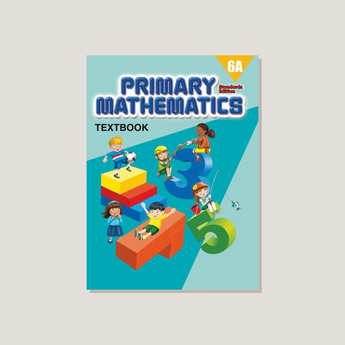Proven Approaches to Streamline Complex Mathematics Topics for Better Understanding
Intricate mathematics subjects usually existing significant challenges for students. Numerous tried and tested methods can facilitate understanding. These techniques include the use of visual aids, damaging down problems, and attaching ideas to real-world situations. Each approach serves to boost understanding and retention. The performance of these techniques increases essential concerns regarding their implementation in educational settings and their effect on pupil involvement. What details methods could be most advantageous in technique?
Recognize the Foundations
Recognizing the structures of mathematical principles is necessary for fostering much deeper comprehension. A strong grasp of standard principles allows learners to build on their knowledge, producing a much more coherent understanding of advanced topics. This foundational expertise includes essential arithmetic operations, number theory, and the homes of various mathematical features. By guaranteeing that students are comfy with these building obstructs, teachers help to avoid confusion and stress as they run into a lot more complex ideas.
In addition, a focus on foundational understanding urges vital reasoning and problem-solving abilities. They can approach challenging issues with self-confidence when pupils identify the partnerships between different concepts. This critical focus not just improves retention yet also advertises an attitude geared towards expedition and questions. Eventually, focusing on foundational understanding outfits students with the devices required to navigate the complexities of maths, leading the way for success in both scholastic and real-world applications.

Use Visual Aids and Diagrams
Visual help and layouts function as effective devices in streamlining complicated mathematical topics. They help with recognizing by offering graphes of abstract ideas, making them extra tangible. Graphs can illustrate features' behavior, while geometric representations can clear up spatial relationships in issues entailing shapes and angles.
Flowcharts and concept maps can break down detailed procedures, assisting learners via multi-step options visually. This method not only improves comprehension yet likewise engages different knowing styles, especially visual learners that might have a hard time with spoken explanations alone.

Damage Down Problems Into Smaller Steps
Breaking down problems right into smaller, workable actions can significantly boost comprehension in maths. This approach enables learners to focus on one element of a problem at a time, reducing feelings of bewilder and complication. By separating each step, pupils can establish a more clear understanding of the underlying principles and techniques needed to reach a solution.
For example, when addressing an algebraic equation, one can start by streamlining each term before applying procedures. This methodical breakdown not just makes clear the procedure however also makes it possible for students to determine errors a lot more quickly.
This method motivates important thinking, as learners are prompted to examine each action's significance to the general problem. Inevitably, breaking down problems cultivates a more systematic method to mathematics, promoting a deeper understanding and retention of product. By grasping smaller sized actions, pupils build confidence and skill that add to their success in a lot more complex mathematical difficulties.
Include Real-World Instances
Including real-world examples into math guideline can substantially boost trainee engagement and understanding. When students attach mathematical concepts to daily life, they commonly find the product more relatable and simpler to understand. Making use of budgeting circumstances to teach addition and reduction aids pupils comprehend the sensible applications of these procedures. In a similar way, making use of sporting activities statistics can effectively demonstrate principles in probability and averages, making the learning experience more pertinent and satisfying.
Educators can also include real-life information, such as populace growth or ecological data, to show charts and features. This method not only makes clear abstract ideas yet also fosters critical believing as trainees examine and translate real data (struggles in primary math). By linking the space in between theory and technique, trainees are most likely to appreciate the worth of mathematics in their day-to-day lives, leading to improved retention and application of mathematical concepts
Urge Collaborative Discovering
Collaborative understanding works as an effective tool in streamlining complex mathematics ideas. By taking part in team problem fixing, pupils can share diverse viewpoints and techniques, boosting their understanding. In addition, peer mentor techniques and interactive research study sessions cultivate an encouraging setting, allowing learners to realize difficult material extra efficiently.
Team Trouble Addressing
Team problem addressing promotes a setting where students can proactively engage with intricate math ideas via team effort. By functioning together, trainees can share varied perspectives and techniques, boosting their understanding of mathematical concepts. Collaborative initiatives encourage conversation, allowing individuals to verbalize their thinking and make clear mistaken beliefs. This interaction promotes important reasoning and much deeper understanding of tough topics. Additionally, team problem addressing can decrease stress and anxiety connected with hard math problems, as trainees sustain each various other in getting over obstacles. Educators can promote these sessions by assigning varied roles within teams, ensuring each student contributes and learns from the procedure. Inevitably, this collaborative approach not only improves comprehension but additionally constructs essential interaction and synergy skills important for future academic and specialist ventures.
Peer Training Techniques
Building on the benefits of team click here to read trouble solving, peer teaching techniques arise as an effective approach to additionally improve collaborative understanding. These techniques entail trainees discussing concepts to each other, which reinforces their understanding and builds self-confidence. They articulate their believed processes and clarify their own mistaken beliefs when students take on the role of educator. This mutual exchange fosters a supportive setting where trainees really feel a lot more comfortable news asking questions and looking for assistance. In addition, peer training motivates involvement, as pupils commonly relate much better to their peers than to standard direction. By integrating these methods into the learning process, instructors can create a vibrant classroom atmosphere that advertises much deeper comprehension and retention of intricate mathematical topics.
Interactive Research Procedure
Interactive study sessions can substantially improve the learning experience by cultivating an atmosphere where pupils actively engage with each other. These collective setups urge participants to share varied perspectives, consequently growing their understanding of complicated mathematics topics. Students can damage down intricate ideas right into convenient parts, promoting clearer comprehension. With group conversations, trainees can clear up uncertainties and strengthen their understanding by educating peers, which strengthens their grasp of the material. Furthermore, interactive sessions advertise inspiration and liability, as trainees really feel extra devoted to their studies when working together with others. Integrating devices such as analytical video games or collaborative platforms can better improve these sessions, making learning both efficient and satisfying. On the whole, interactive research sessions act as a powerful method for boosting mathematical understanding.
Utilize Innovation and Online Resources
As pupils browse via complicated mathematics topics, leveraging technology and on the internet sources can substantially enhance their understanding. Educational systems such as Khan Academy and Coursera supply video tutorials that break down elaborate ideas into absorbable sections. These resources often incorporate interactive components, permitting pupils to exercise problems in actual time, get prompt responses, and track their development.
In addition, math-specific apps like Photomath and Desmos supply devices to visualize formulas and charts, promoting a deeper conceptual understanding. Online forums, such as Heap Exchange, allow students to position questions and engage with a neighborhood of students and experts, further clarifying tough topics.
Exercise On A Regular Basis and Evaluation Consistently
Regular practice and normal evaluation are important for understanding complex mathematics topics. Involving with mathematical concepts daily strengthens understanding and helps to determine locations that require more interest. By solving issues repeatedly, students can strengthen their understanding of theses and treatments, making them acquired behavior gradually.
Including a structured testimonial schedule enables people to revisit formerly straight from the source found out material, making certain retention and clearness - struggles in primary math. This technique not only help in memory consolidation however likewise highlights connections in between various mathematical ideas, cultivating a more alternative understanding
In addition, setting details objectives for both practice and review can boost emphasis and inspiration. For circumstances, allocating time every week for targeted assessments and exercises can produce significant advantages. Ultimately, normal practice and regular testimonial form the backbone of successful mathematics education, equipping learners with the self-confidence and skills needed to tackle increasingly complicated topics.
Often Asked Concerns
How Can I Keep Motivated While Knowing Intricate Math Topics?
Staying motivated while finding out intricate mathematics topics involves establishing possible goals, commemorating little successes, seeking support from peers, making use of varied sources, and preserving a positive frame of mind to embrace obstacles as possibilities for growth and understanding.
What Prevail Errors to Stay Clear Of in Math Comprehension?
Typical mistakes in math comprehension consist of disregarding foundational ideas, hurrying via troubles, falling short to practice frequently, and misconception terminology (struggles in primary math). Furthermore, over-reliance on memorization as opposed to grasping underlying principles can hinder real understanding and application
Exactly how Do I Examine My Recognizing of Math Concepts?
To evaluate understanding of math principles, one ought to on a regular basis practice issues, seek responses, engage in conversations, and utilize self-quizzes. Assessing blunders and mentor principles to others can additionally enhance understanding and retention of product.
What Should I Do if I Feel Overwhelmed by Mathematics?
When really feeling overwhelmed by mathematics, one ought to take breaks, practice mindfulness, and break issues right into smaller components. Seeking help from teachers or peers can likewise give quality and minimize anxiousness related to challenging ideas.
Just How Can I Find a Math Tutor or Study Hall?
To find a math tutor or research study team, one can search on the internet systems, local neighborhood boards, or instructional institutions. Connecting with peers and seeking referrals can additionally lead to efficient tutoring choices and research study cooperations.
When students acknowledge the partnerships in between various concepts, they can approach challenging issues with self-confidence. Team trouble fixing fosters an environment where students can actively engage with complicated math principles through synergy. Additionally, group trouble fixing can lower anxiousness associated with tough math issues, as students sustain each other in getting rid of barriers. These strategies include pupils explaining principles to one another, which enhances their understanding and constructs confidence. Students can break down elaborate concepts right into convenient parts, promoting clearer comprehension.